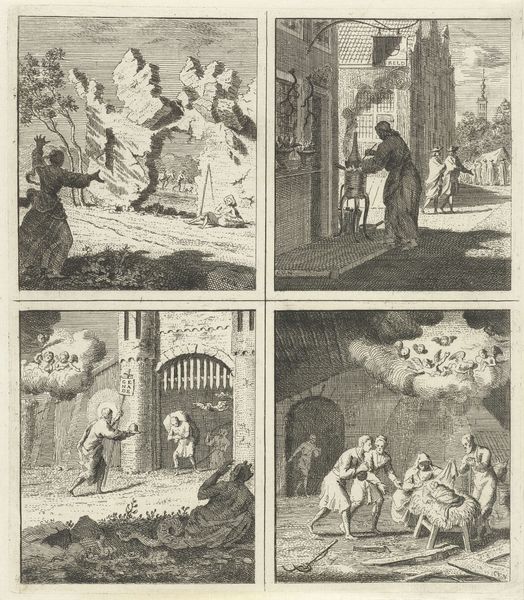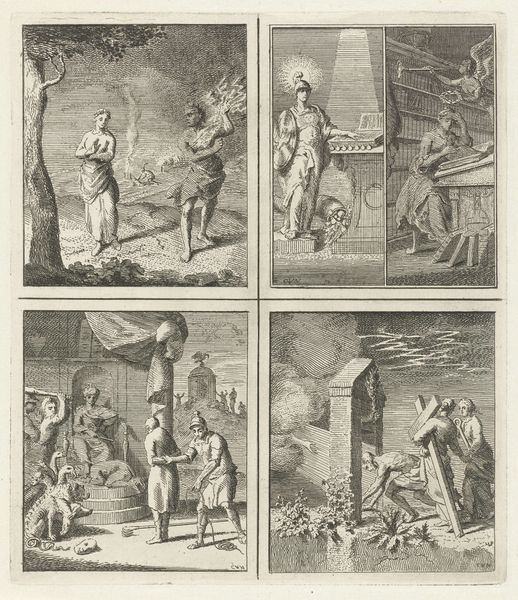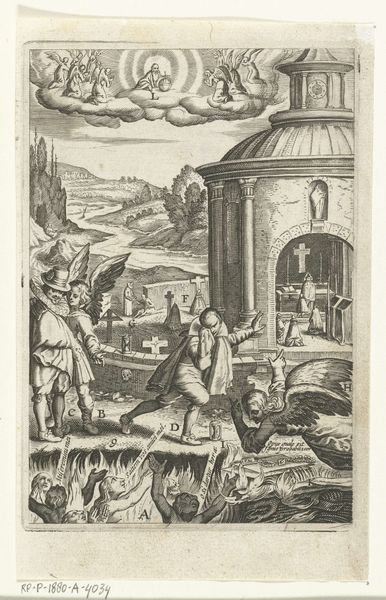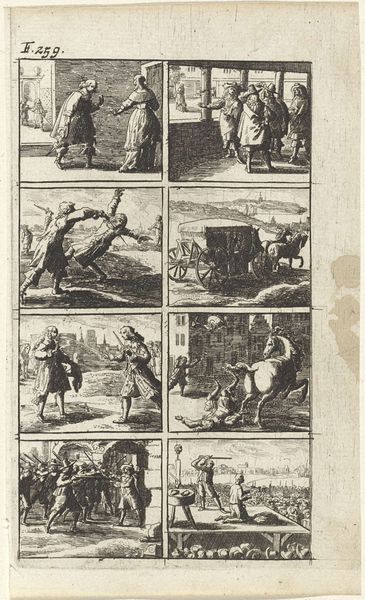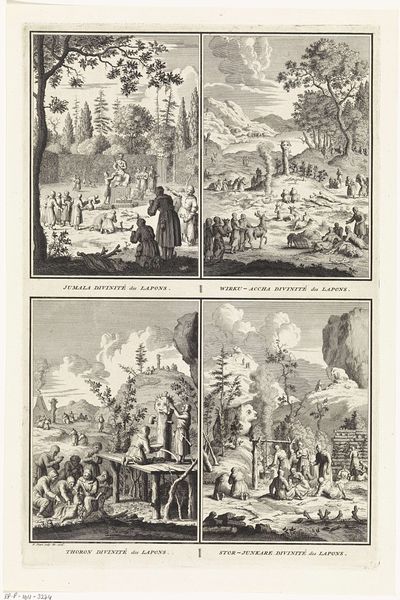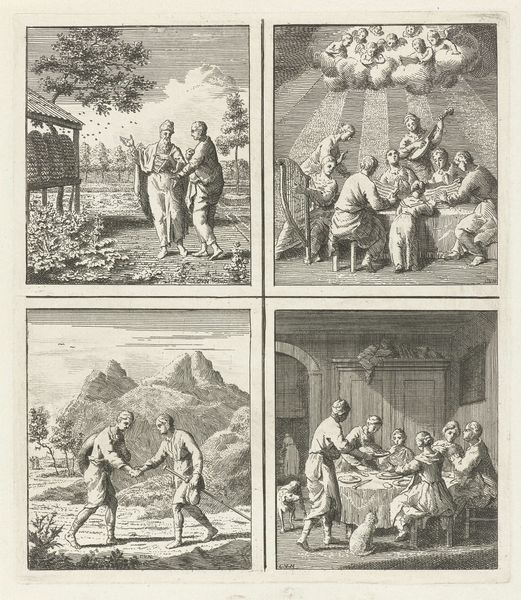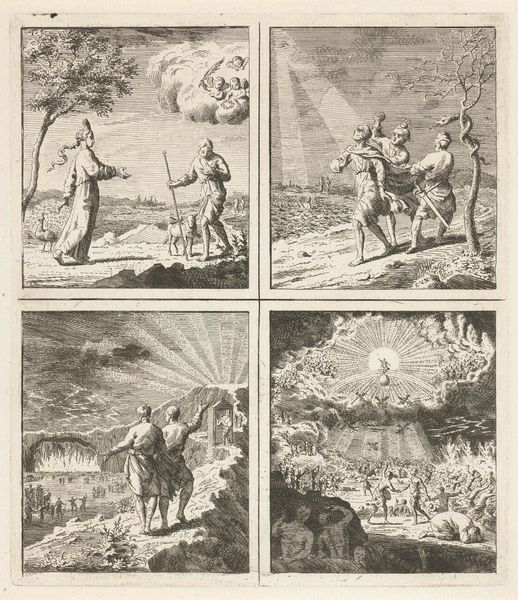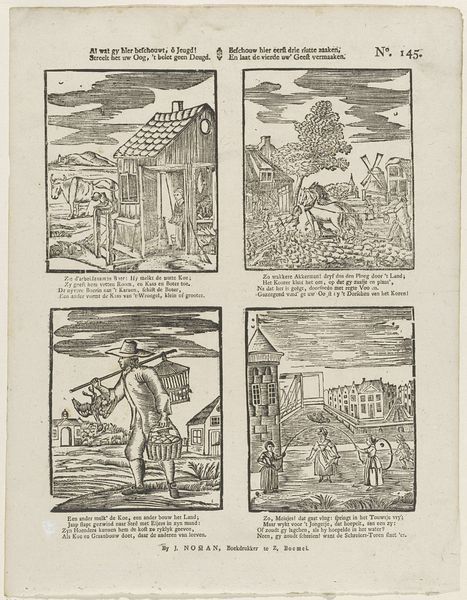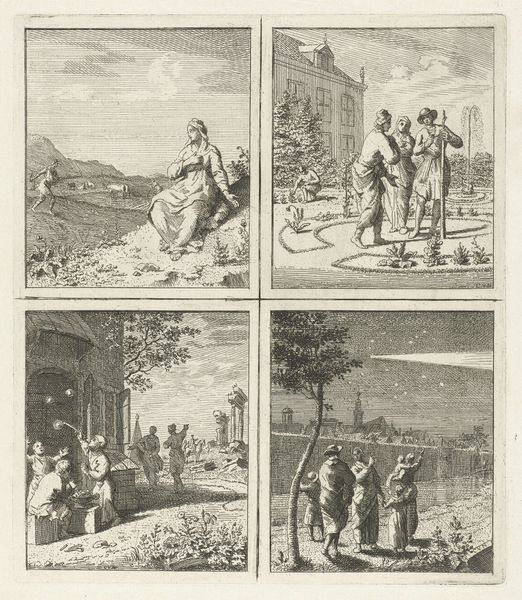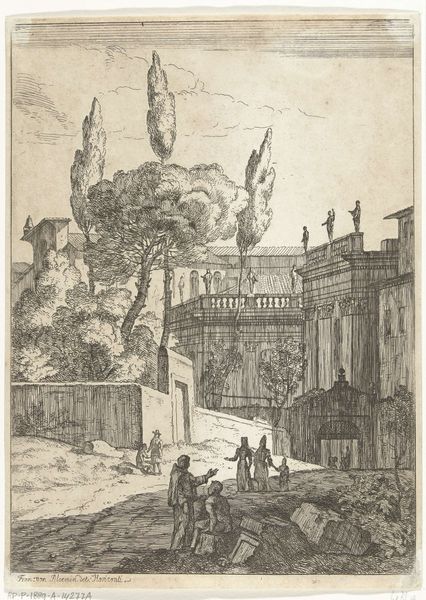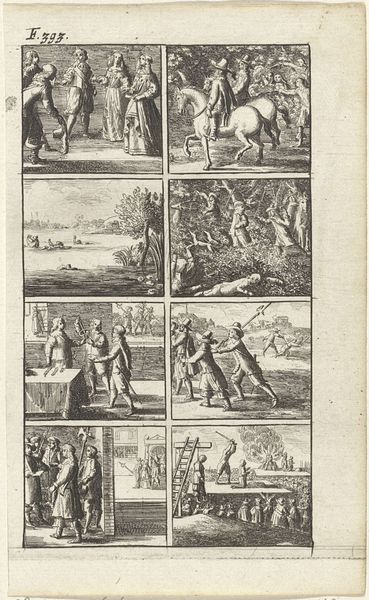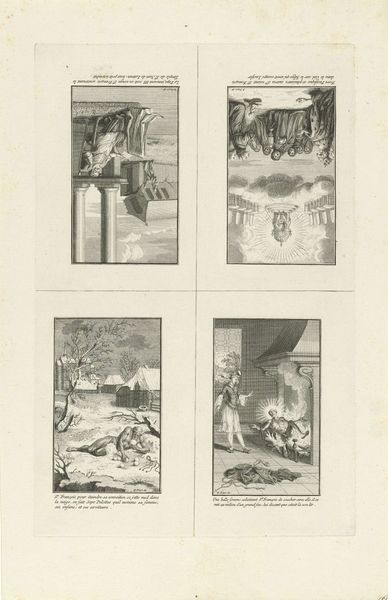
Hooiwagen / Bleken van linnen / Biervaten / Simson laat de vossen met brandende fakkels los before 1767
0:00
0:00
Dimensions: height 192 mm, width 167 mm
Copyright: Rijks Museum: Open Domain
Curator: Looking at this print by Cornelis van Noorde, dating from before 1767, one immediately senses a world captured in monochrome detail. What strikes you first? Editor: The division! The image is neatly sectioned into four separate scenes, like panels in a comic book or perhaps stages of some unknown process. It's certainly intriguing and maybe hints at shifting societal activities and how their presentation impacts perception. Curator: Indeed. Each panel offers a snapshot of everyday life, almost like a silent film strip. We see scenes depicting, as the title suggests, a hay wagon, the bleaching of linen, beer barrels, and then that rather dramatic image of Samson releasing foxes with burning torches. Editor: Those different scenes point at labor, resources, and maybe even the instruments of conflict. Looking at the “bleaching of linen”, what materials were involved in creating this vast white fabric? Were they local materials? Was bleaching a large local business at this time? Curator: These details definitely highlight the print's documentary value. It reflects not only the landscapes and activities but also the economy of the time, showing various labor practices from agricultural work to early industrial processes related to cloth-making. It also serves as an iconographical reference: The Samson story was well-known through the bible. Van Noorde juxtaposes this scene with banal imagery, highlighting the social role of storytelling. Editor: Speaking of context, I can’t help but consider where something like this would be displayed or purchased. Was this print intended for a broad audience, perhaps decorating a modest home? How might the emerging culture of print contribute to new forms of visual communication, like this separation into "scenes?" Curator: That’s a great point. Prints like these became increasingly accessible and were displayed not only in homes but also served a vital purpose in disseminating information and shaping public perception about religion. The organization in separated scenes allows for different narrative perspectives too, enabling viewers to interpret it according to personal values. Editor: I agree. The interplay between high-art biblical scene and daily life also highlights what society finds valuable to be documented and shared: is that hay worth celebrating, as much as heroic feats or the brewing industry? Curator: Precisely, a confluence of economic and visual narratives is captured, prompting questions of the value embedded in mundane moments. What Van Noorde chose to portray. What choices did the client commission, and why? Editor: This image offers such a compelling look into pre-industrial labor practices and the political functions of everyday visual materials. Curator: And I believe your perspective only adds layers of meaning by examining the techniques involved in the printmaking process.
Comments
No comments
Be the first to comment and join the conversation on the ultimate creative platform.
